Generative AI in Practice: Advanced Insights and Operations
Large Language ModelsLLM
Introduction to LLMs and its Types
This lesson is a key part of our course, designed to equip you with essential terminology and insights into Generative AI. We will demystify large language models (LLMs) by exploring their underlying architecture rather than treating them as mere black boxes.
In this module, you will learn about the landscape of foundation models and LLMs, performance enhancement techniques, and critical topics such as responsible AI and ethical considerations. We will also review real-world use cases, providing a comprehensive understanding of these systems.
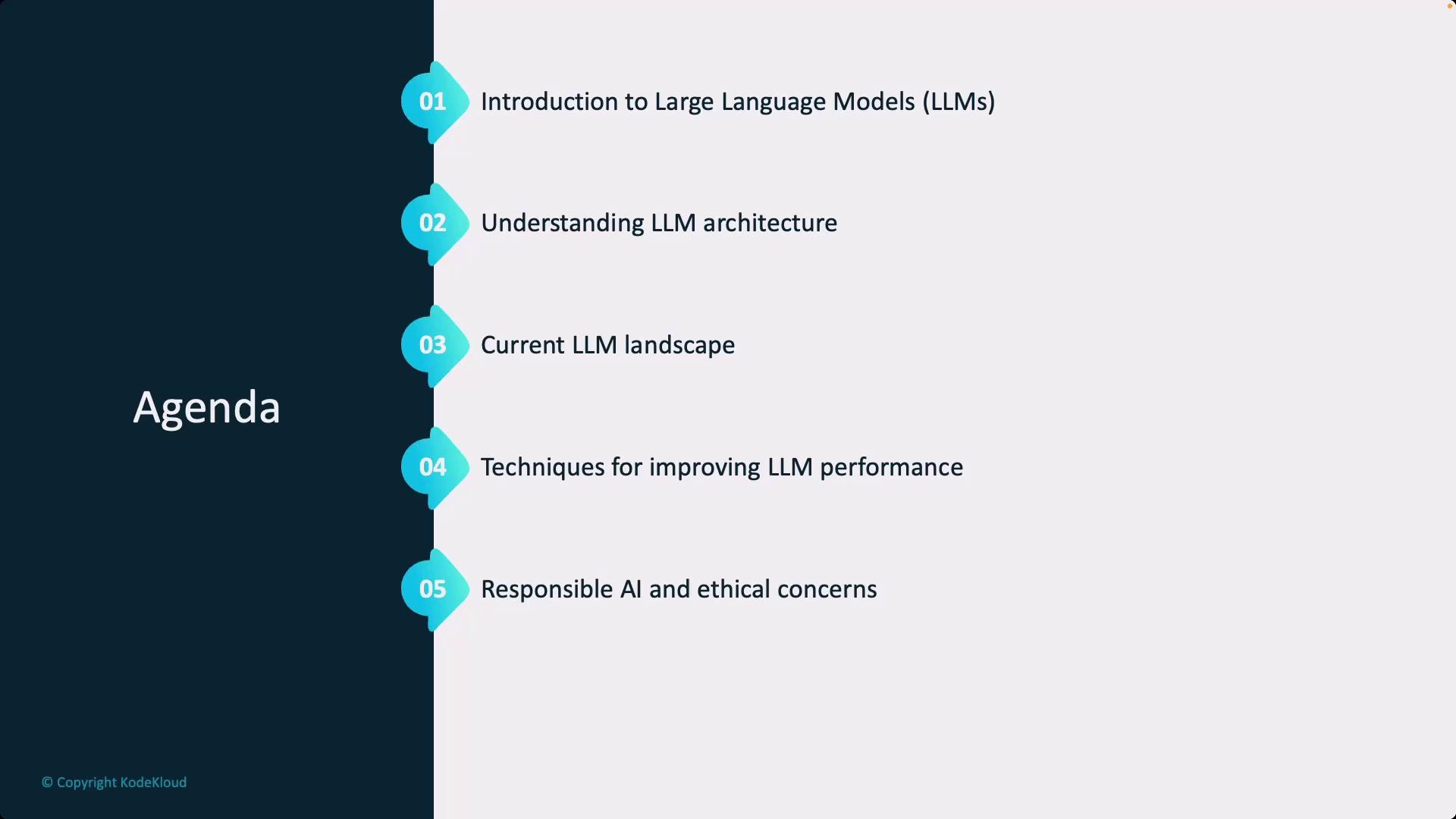
Foundation Models and LLMs
Foundation models are large-scale models pre-equipped with versatile capabilities that can be fine-tuned for a variety of tasks. Examples include text generation models (referred to as large language models), image recognition systems, speech processing algorithms, and even multimodal models that can handle diverse inputs and outputs.
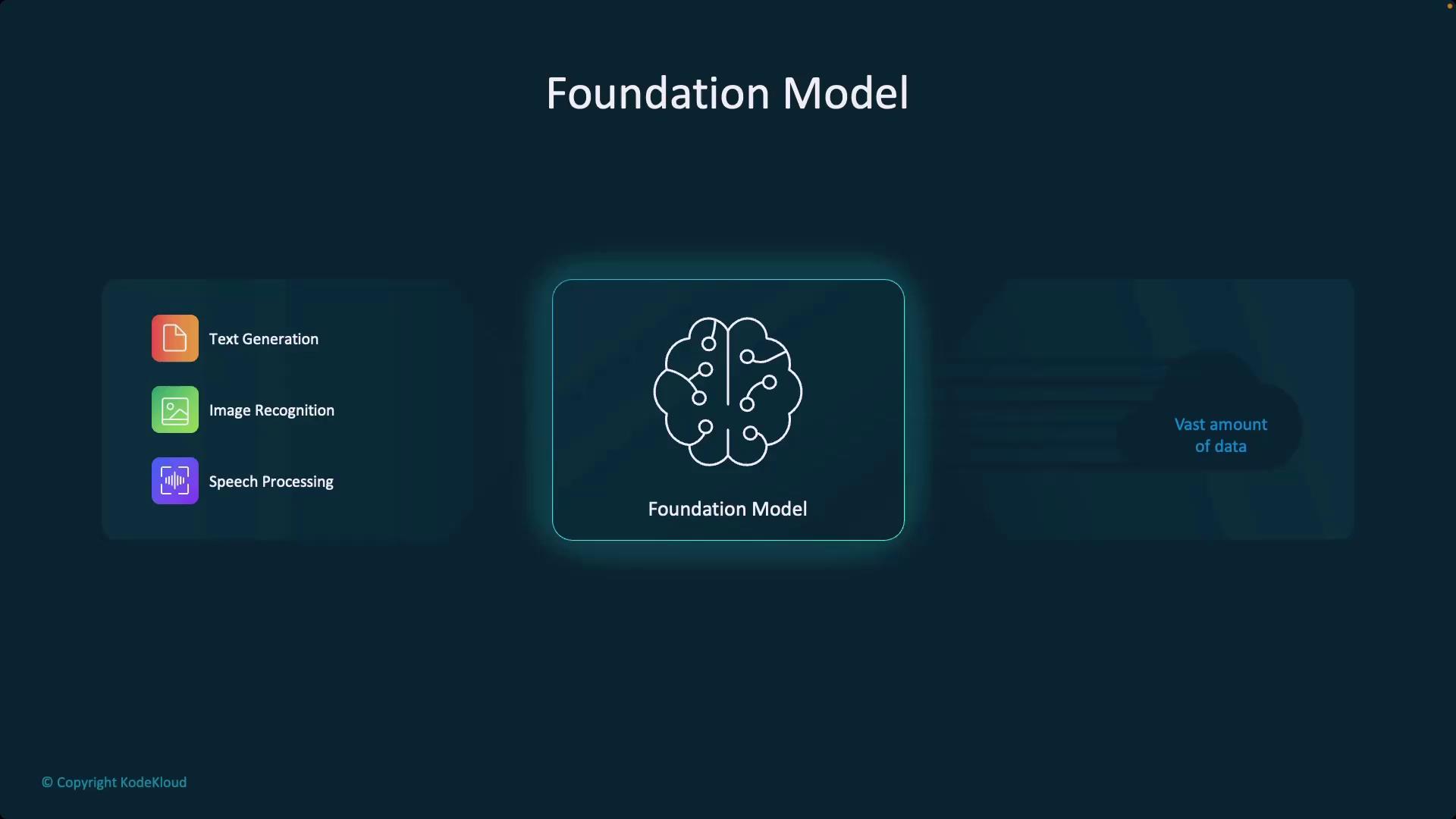
Depending on the context, these systems may be referred to as foundation models or large language models. Originally, LLMs were used specifically for text processing, while the same underlying principles have since been applied to other modalities.
Transformer Architecture: The Driving Force Behind LLMs
At the core of these systems is the groundbreaking transformer architecture. This innovation has revolutionized deep neural networks, enabling models to process and learn from complex patterns much like brain tissue. Not only are transformers integral to LLMs, but they also power robust vision and robotic models.
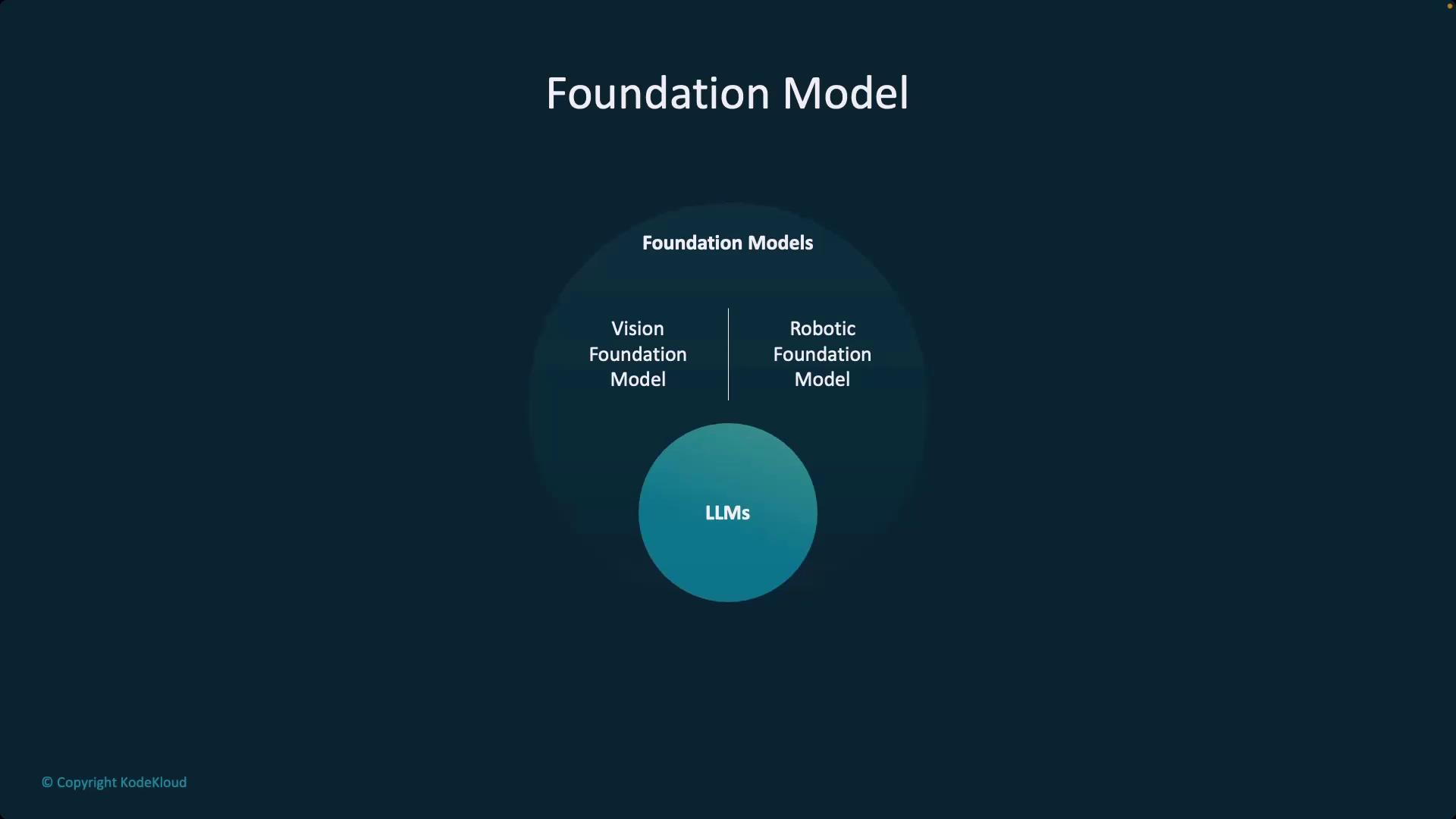


Overview
There are three primary approaches to consuming these models:
1. Proprietary Models
These include GPT-4.0, Gemini, Tropics, and more. Typically accessed via APIs, they offer high-level functionality while keeping the intricate details (such as full training data transparency) under wraps. This controlled exposure ensures developers can leverage these models without needing extensive internal knowledge.
2. Open-Source Models
Examples such as GPT Neo, GPT-J, and other models from Eleuther AI provide complete visibility into their code, datasets, and weights. This transparency enables deep customization and understanding. Open-source models are often supported by government bodies, academic institutions, or community organizations.
3. Government and Academic Models
These models are developed with backing from public institutions and come with structured support for product deployment, licensing, and continuous updates. Their role may evolve as the market matures, but they remain essential in production environments.
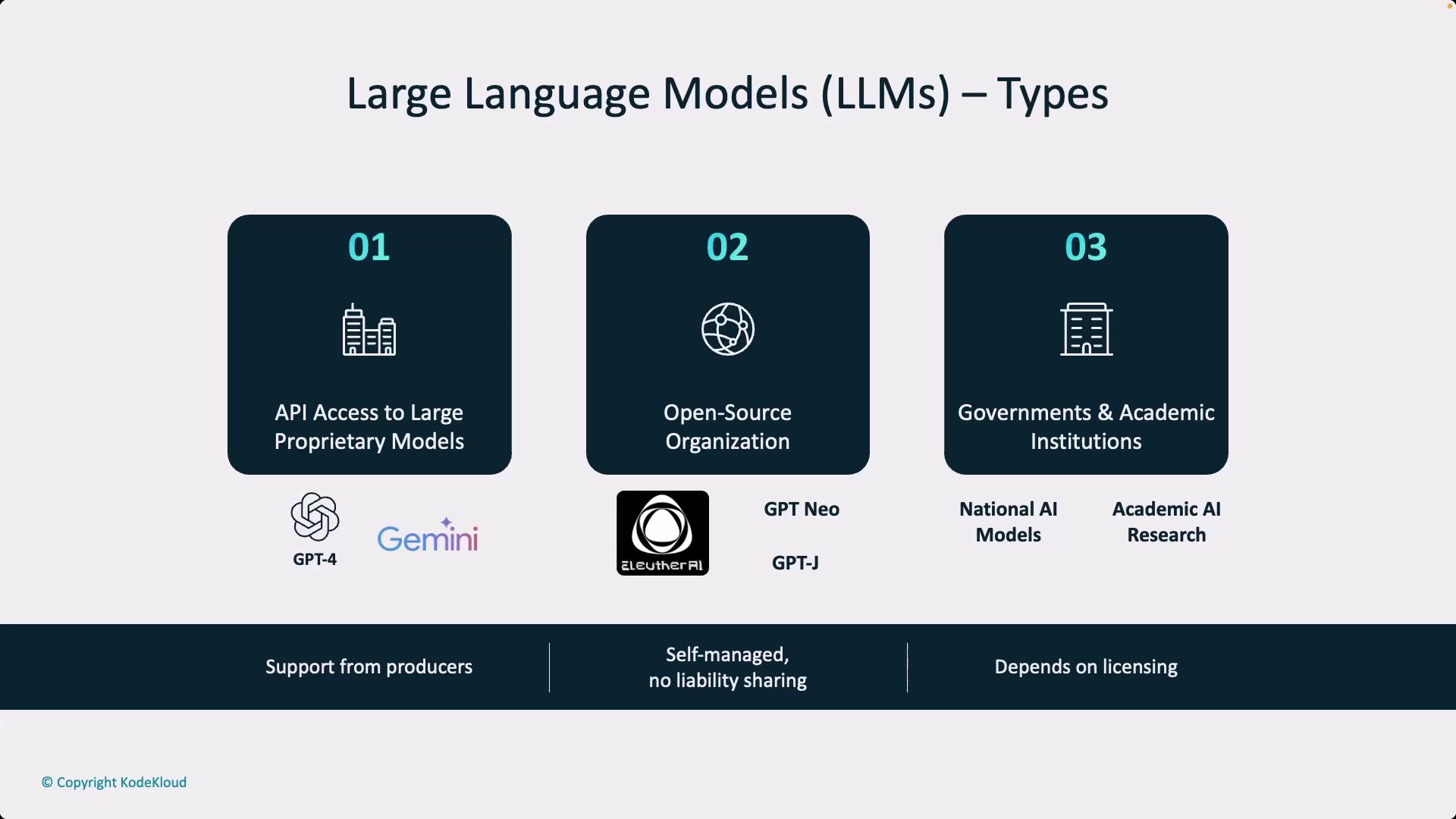
Licensing Reminder
Ensure you consider licensing implications in any production deployment. Many models are distributed under copyleft licenses that may restrict specific usages, such as fine-tuning one model with another. API-based models and their limitations also require careful review.
The Anatomy of an AI Model
At its core, an AI model is a mathematical system that processes inputs to yield outputs based on learned patterns. Whether it is a simple regression model or a sophisticated transformer-based system, the fundamental input-output mechanism remains constant. In a transformer-based LLM, the typical stages include:
- A user inputs text.
- The model processes and analyzes the input.
- It generates a corresponding response.
- The response is delivered back to the user.
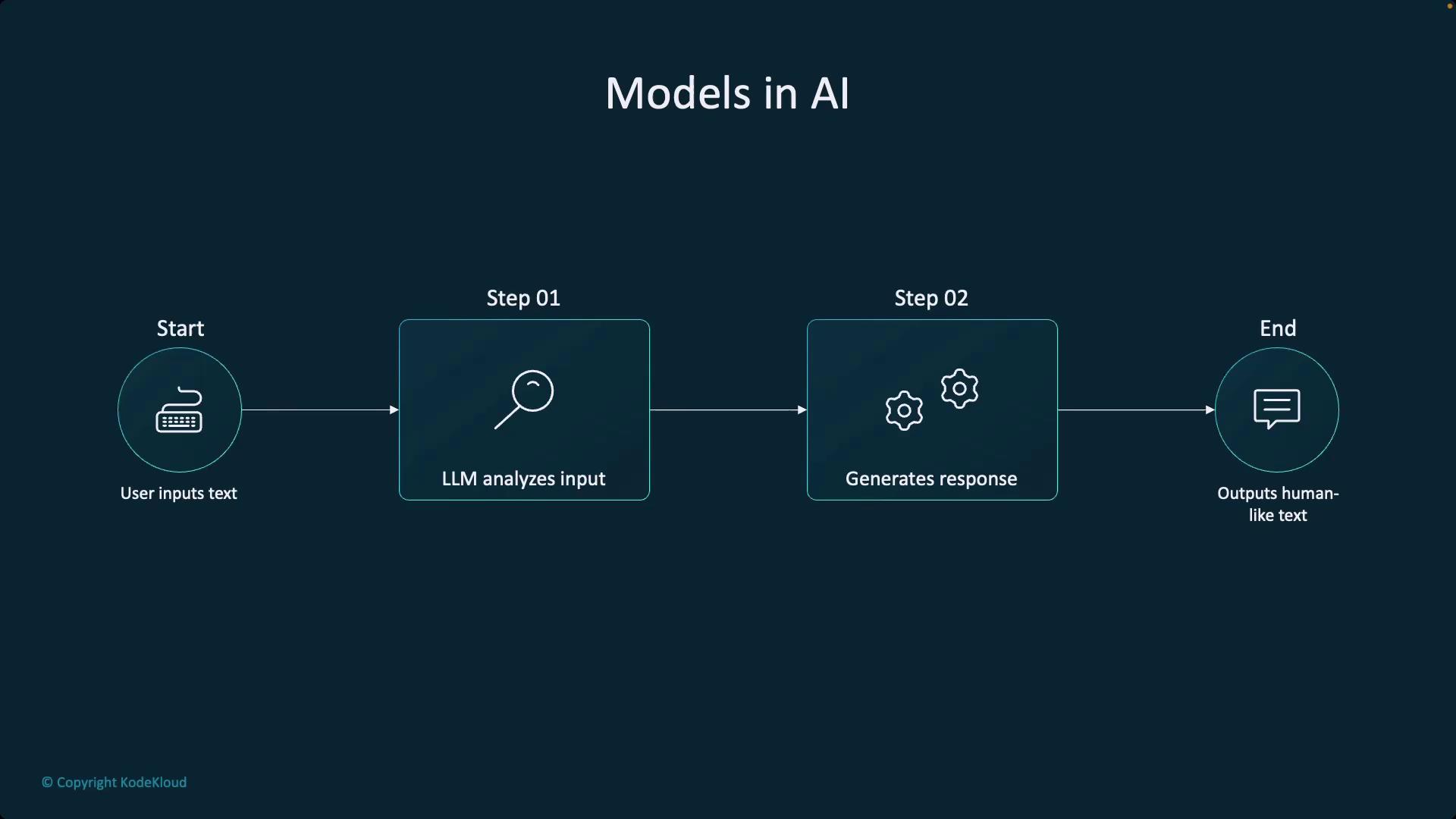
The design of these models hinges on their ability to understand language at two levels:
- Syntax: Ensuring that generated text follows proper grammatical structures.
- Semantics: Capturing and conveying the underlying meaning.
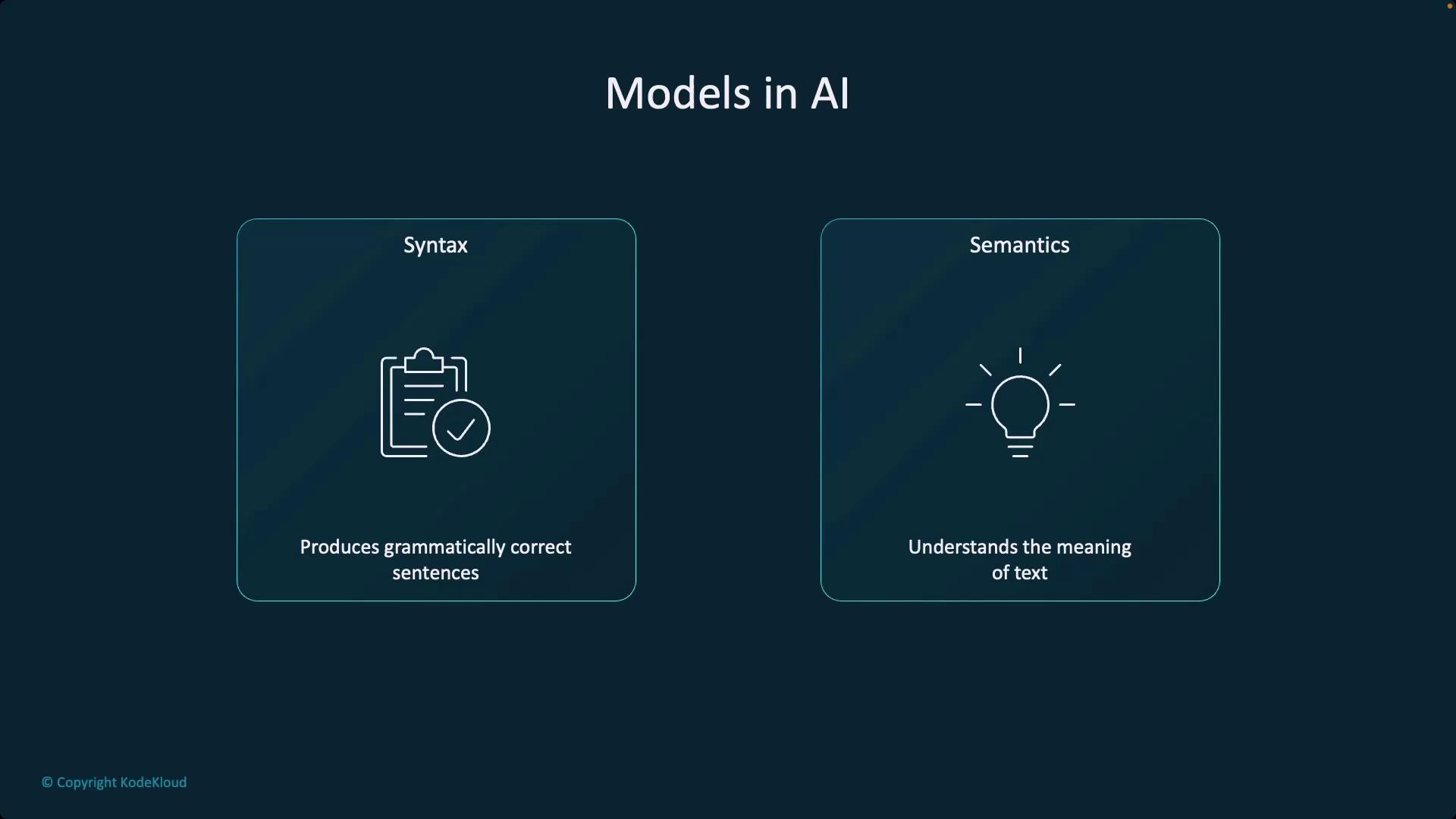
In the next section, we will explore transformer models in greater depth, examining the mechanisms by which they process inputs, generate outputs, and master both syntactic and semantic nuances.

Watch Video
Watch video content